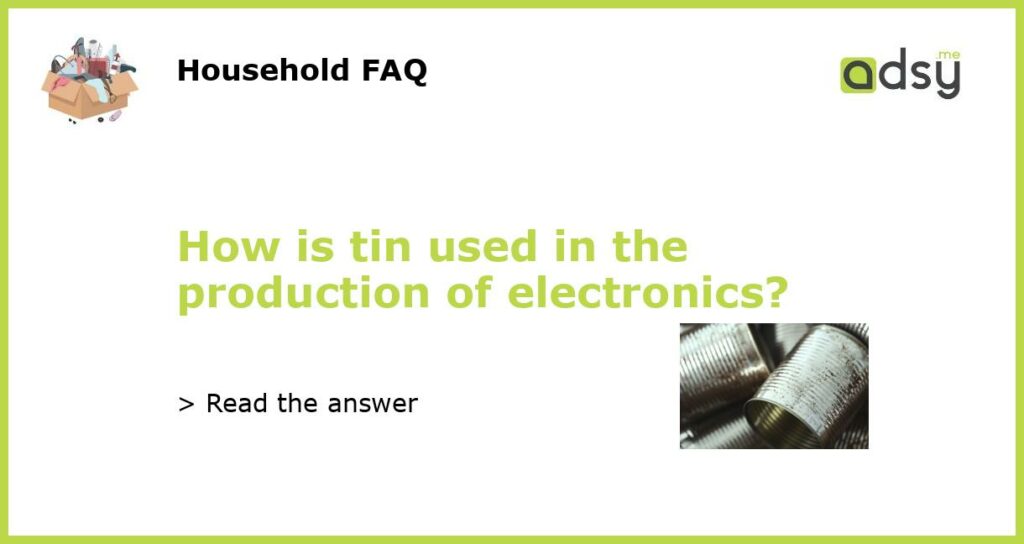Tin’s Role in Electronic Production
Tin, a versatile and widely-used metal, plays a vital role in the production of electronics. From soldering to the creation of integrated circuits, tin is indispensable in the electronic manufacturing process due to its numerous desirable properties. In this article, we explore the various ways tin is used in the production of electronics and delve into its unique characteristics that make it the preferred choice for electronic manufacturers.
Soldering and Tin
One of the primary uses of tin in electronics is in soldering. Solder is a low-melting alloy typically made of tin and lead, although lead has been phased out due to environmental concerns. Tin-based solders are used to join electrical components to printed circuit boards (PCBs) and create reliable connections. The low melting point of tin-based solders, typically around 200°C, allows for easy application and rework during the manufacturing process.
Tin-Lead Alloy and Integrated Circuits
Tin is also crucial in the production of integrated circuits (ICs), the building blocks of electronic devices. A tin-lead alloy, known as solder bumps or solder balls, is used to connect the IC chip to the substrate or PCB. These solder bumps provide reliable electrical and mechanical connections, allowing the IC to perform its intended function. Tin-lead solder bumps are typically created through a process called reflow soldering, where the solder is heated above its melting point to form the desired connections.
Tin Plating for Corrosion Resistance
In addition to soldering applications, tin is frequently used for plating electronic components to provide corrosion resistance. Tin plating acts as a protective barrier against moisture, oxygen, and other environmental elements that can degrade the performance and reliability of electronic devices. It is commonly used in connectors, cables, and other components exposed to harsh operating conditions.
Tin Whiskers and Challenges in Electronics
While tin offers numerous benefits in the production of electronics, it also presents certain challenges. One such challenge is the phenomenon known as tin whiskers. Tin whiskers are tiny, hair-like formations that can grow spontaneously from the surface of tin-plated components. These whiskers can cause electrical short circuits and potentially lead to malfunctions or failures in electronic devices.
Manufacturers are actively researching and implementing strategies to mitigate the risks associated with tin whiskers, such as alloying tin with other metals or applying conformal coatings to protect against whisker growth. These measures help ensure the reliability and longevity of electronic devices manufactured using tin-based components.






